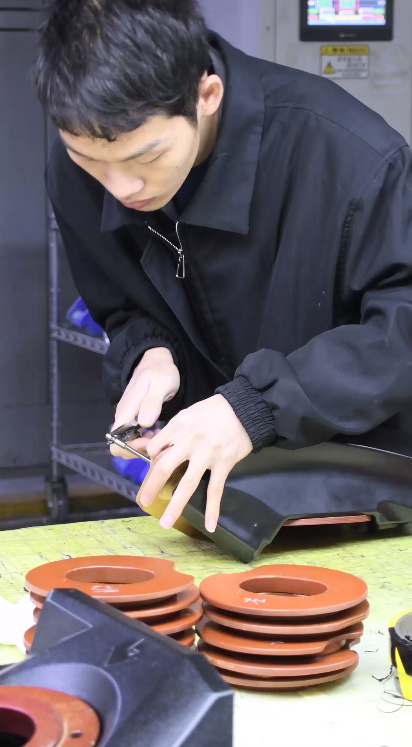Analysis and Solutions for Uneven Wall Thickness of Rotomolded Products
 Mar 02,2024
Mar 02,2024

Analysis and Solutions for Uneven Wall Thickness of Rotomolded Products
A common challenge for rotational molding manufacturers is the occurrence of uneven wall thickness in rotomolded products. This issue can lead to structural vulnerabilities, aesthetic imperfections, and a degradation in product performance. Several factors contribute to uneven wall thickness, including irregular material distribution, flawed mold design, inadequate processing parameters, and compromised mold material integrity. To address this problem, manufacturers are advised to carefully select suitable materials, refine mold design, meticulously control and monitor processing parameters, and maintain the integrity of the mold.
1. Causes of Uneven Wall Thickness
1.1 Material Distribution:
Inadequate distribution of the plastic material within the mold can lead to uneven wall thickness. If the plastic does not flow evenly across the mold, some areas may receive more material than others, resulting in thicker walls.
1.2 Mold Design
Improper design of the mold, including insufficient draft angles, inadequate venting, or poor gate placement, can impede the flow of plastic material and cause uneven wall thickness.
1.3 Processing Parameters
Incorrect processing parameters, such as improper heating or cooling times, can affect the material's flow and result in uneven wall thickness. Insufficient heating may lead to incomplete material distribution, while excessive heating can cause the material to flow unevenly.
1.4 Mold Material and Integrity
Wear and damage to the mold can affect the material's flow and lead to uneven wall thickness. Molds with distorted or worn surfaces may not allow for proper material distribution.
2. Solutions for Uneven Wall Thickness
2.1 Material Selection and Handling
Selecting the appropriate plastic material and ensuring proper handling and storage can help prevent uneven wall thickness. Using materials with a suitable melt flow index and processing temperature range can promote even material distribution.
2.2 Mold Design Optimization
Optimizing the mold design by incorporating proper draft angles, adequate venting, and strategic gate placement can facilitate even material flow and prevent uneven wall thickness.
2.3 Process Control and Monitoring
Carefully controlling and monitoring the rotational molding process parameters, such as oven temperature, cooling time, and rotation speed, can help achieve consistent material distribution and prevent uneven wall thickness. Regular maintenance and calibration of the equipment can also ensure consistent processing conditions.
2.4 Mold Maintenance and Inspection
Regular maintenance and inspection of the mold can identify any potential issues that may cause uneven wall thickness. Addressing any damage or wear on the mold's surface ensures proper material flow and uniform wall thickness.
Light Venus is a professional custom rotational molding manufacturer, boasting years of extensive manufacturing experience. Our state-of-the-art facilities and adept team are equipped to offer comprehensive solutions for your entire product line. Connect with us online or drop us a line at roto@lightvenus.com to delve deeper into our custom rotational molding services.

 Tel: 0086-13632687993
Tel: 0086-13632687993  Email: roto@lightvenus.com
Email: roto@lightvenus.com

 Home
Home Light Venus Expanded Production Capacities with Additional Rotational Molding Machines
Light Venus Expanded Production Capacities with Additional Rotational Molding Machines  You May Also Like
You May Also Like



 Tel
Tel
 Email
Email
 Address
Address








